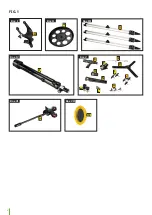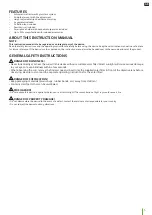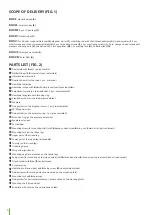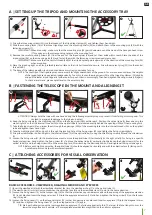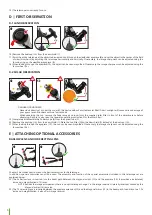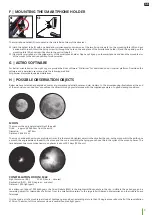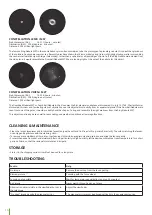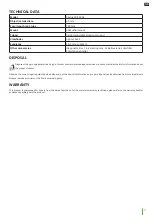
9
GB
F | MOUNTING THE SMARTPHONE HOLDER
BARLOW
The smartphone holder (P) is mounted in the direct field of view of the observer.
24) Hold the optical tube (2) with one hand and simultaneously unscrew one of the two fixing screws (4) on the mounting fork (30) and put
it aside within reach. Insert the fixing screw (4) through the hole on the end piece of the smartphone holder (P) and the opening on the
mounting fork (30) and screw it back onto the optical tube (2).
25) Clamp the smartphone in the gripper arm of the smartphone holder. Open any Sky app on the smartphone and bend the movable arm
of the mount to the desired position for observation.
G | ASTRO SOFTWARE
For better orientation on the night sky, we provide the Astro software "Stellarium" for download on our internet platform. Download the
software and a detailed user manual via the following web link:
http://www.bresser.de/download/stellarium
H | POSSIBLE OBSERVATION OBJECTS
Below we have selected and explained some very interesting celestial bodies and star clusters. In the accompanying illustrations at the end
of the manual you can see how you will see the objects through your telescope with the supplied eyepieces - in good viewing conditions:
MOON
The moon is the only natural satellite of the earth
Orbit:
approx. 384,400 km from the earth
Diametre:
3,476 km
Distance: 384,401 km
The moon has been known since prehistoric times. It is the second brightest object in the sky after the sun. As the moon orbits the earth once
a month, the angle between the earth, the moon and the sun is constantly changing; you can see this in the cycles of the moon's phases. The
time between two consecutive new moon phases is about 29.5 days (709 hours).
CONSTELLATION ORION / M42
Right Ascension (R.A):
05:32.9 (hours : minutes)
Declination (DEC): 05:25 (degrees : minutes)
Distance: 1,500 light years
At a distance of about 1500 light-years, the Orion Nebula (M42) is the brightest diffuse nebula in the sky - visible to the naked eye, and a
rewarding object for telescopes of all sizes, from the smallest binoculars to the largest Earth-based observatories and the Hubble Space
Telescope.
It is the main part of a much larger cloud of hydrogen gas and dust, extending at more than 10 degrees over about half of the constellation
of Orion. The extent of this enormous cloud is several hundred light years.
Summary of Contents for 9618761000000
Page 2: ...2 FIG 1 Box I Box II Box III Box IV Box VI Box VII Box V A B C D E O N G H M F J K Q L I P...
Page 3: ...3 GB FIG 2 B C A A A B A B A B A A...
Page 13: ...13 GB...
Page 14: ...14...
Page 15: ...15 GB...


